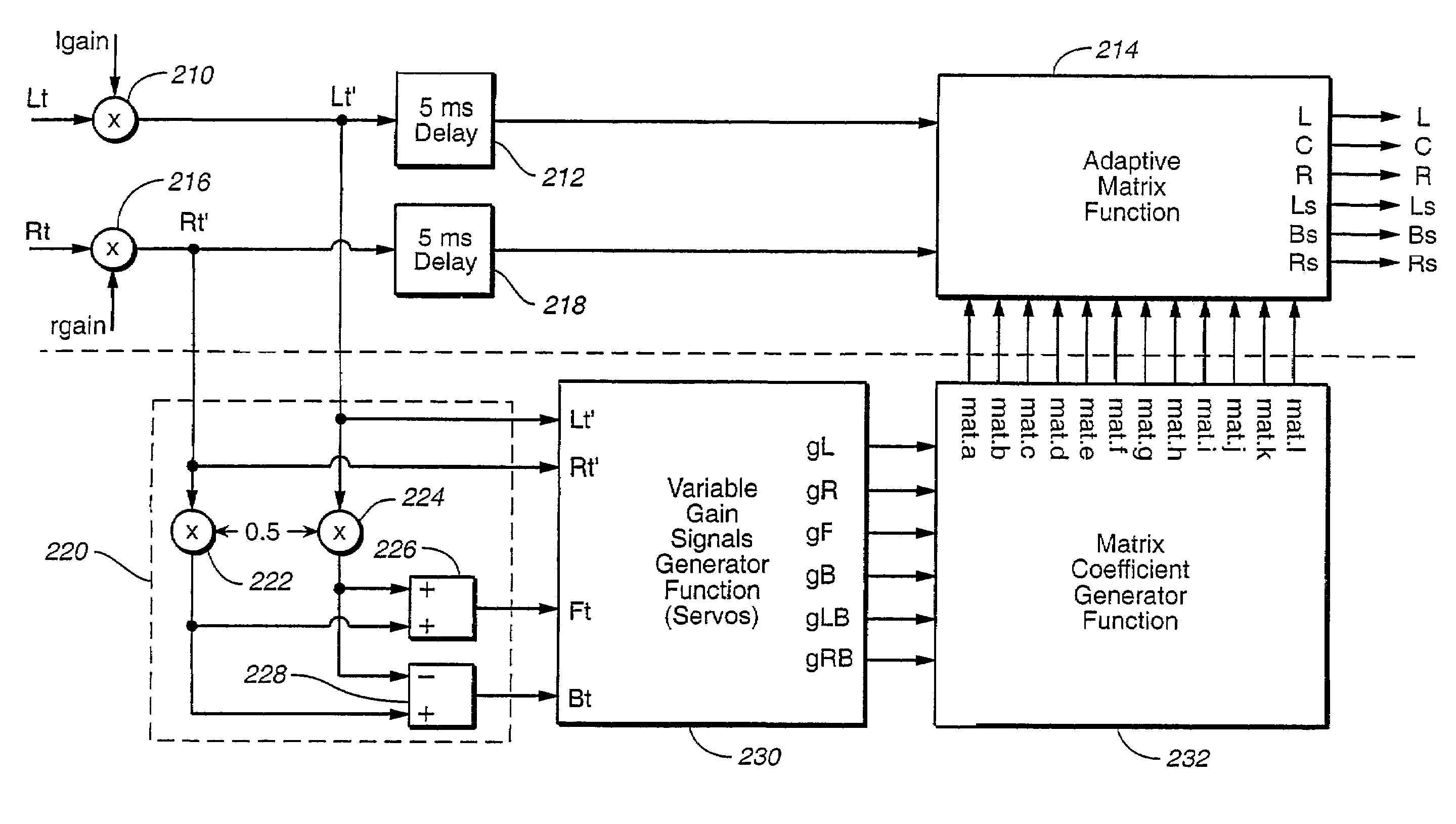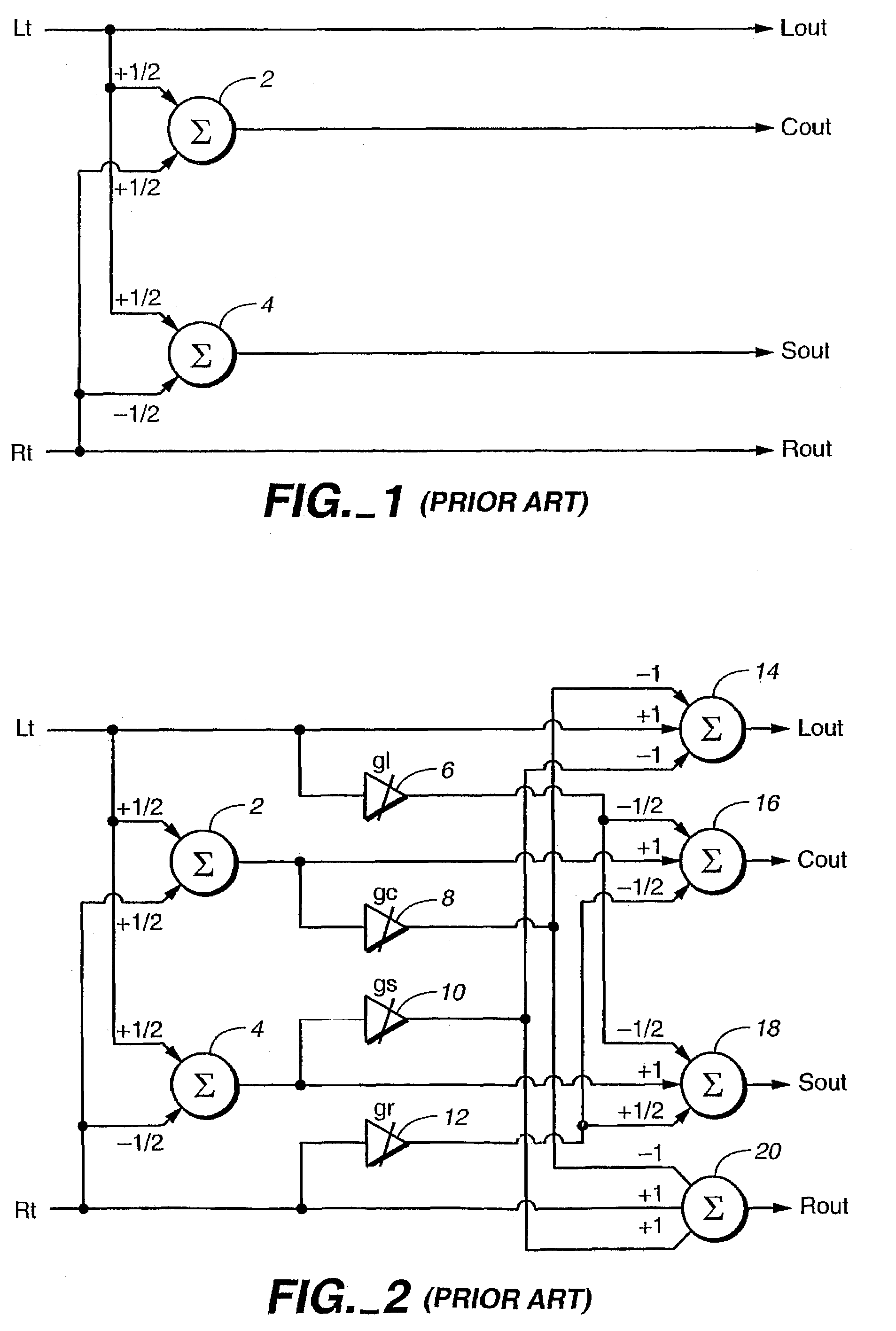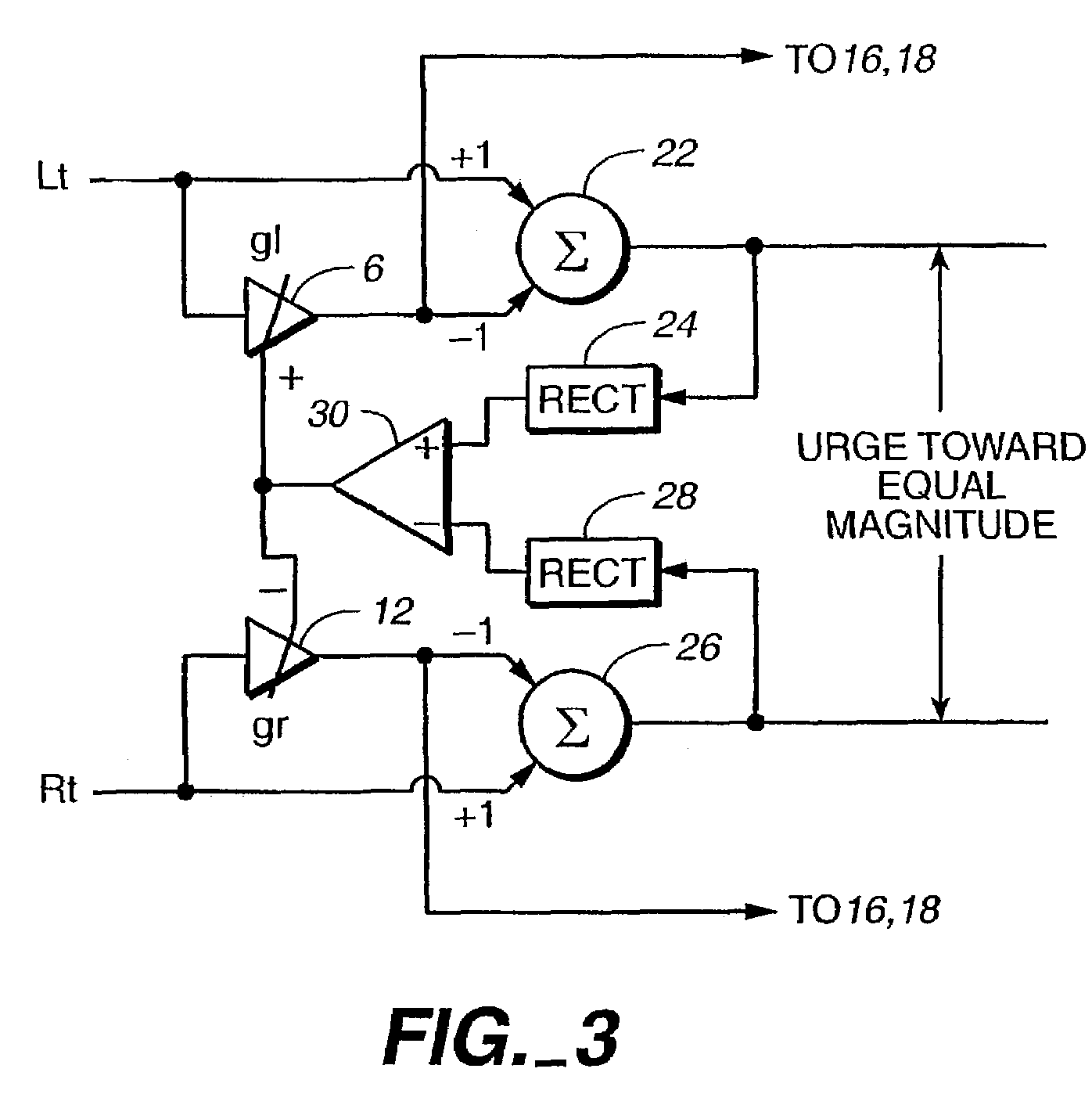Method for apparatus for audio matrix decoding
a technology of audio matrix and decoding apparatus, which is applied in the direction of electrical apparatus, stereophonic system, stereophonic arrangment, etc., can solve the problems of 3 db separation between signals associated with adjacent directions and the disadvantage of crosstalk among decoded audio signals, and achieves a high degree of crosstalk cancellation, simple or low cost circuitry, and high performance.
- Summary
- Abstract
- Description
- Claims
- Application Information
AI Technical Summary
Benefits of technology
Problems solved by technology
Method used
Image
Examples
Embodiment Construction
[0034]A passive decoding matrix is shown functionally and schematically in FIG. 1. The following equations relate the outputs to the inputs, Lt and Rt (“left total” and “right total”):
Lout=Lt (Eqn. 1)
Rout=Rt (Eqn. 2)
Cout=½*(Lt+Rt) (Eqn. 3)
Sout=½*(Lt−Rt) (Eqn. 4)
[0035](The “*” symbol in these and other equations throughout this document indicates multiplication.)
[0036]The center output is the sum of the inputs, and the surround output is the difference between the inputs. Both have, in addition, a scaling; this scaling is arbitrary, and is chosen to be ½ for the purpose of ease in explanation. Other scaling values are possible. The Cout output is obtained by applying Lt and Rt with a scale factor of +½ to a linear combiner 2. The Sout output is obtained by applying Lt and Rt with scale factors of +½ and −½, respectively, to a linear combiner 4.
[0037]The passive matrix of FIG. 1 thus produces two pairs of audio signals; the first pair is Lout and Rout; the second pair is Cout and ...
PUM
 Login to View More
Login to View More Abstract
Description
Claims
Application Information
 Login to View More
Login to View More - R&D
- Intellectual Property
- Life Sciences
- Materials
- Tech Scout
- Unparalleled Data Quality
- Higher Quality Content
- 60% Fewer Hallucinations
Browse by: Latest US Patents, China's latest patents, Technical Efficacy Thesaurus, Application Domain, Technology Topic, Popular Technical Reports.
© 2025 PatSnap. All rights reserved.Legal|Privacy policy|Modern Slavery Act Transparency Statement|Sitemap|About US| Contact US: help@patsnap.com



